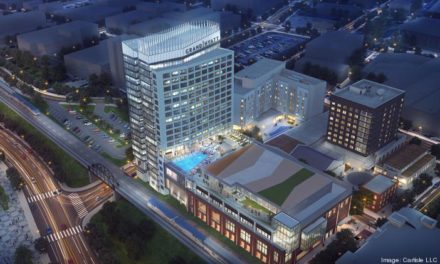Our community has often been hypnotized by its own hyperbole and because of it, there is a tendency to act as if national trends affecting cities don’t apply here and that Memphis and Shelby County are immune to the forces dividing communities into winners and losers.
In the almost 15 years since we began this blog, a central theme from the beginning has been how talent would be the overriding factor in determining the future of Memphis and Shelby County and how our community had to develop its talent from within because we were not attracting new residents, particularly young workers.
It’s not like we were talking in a vacuum. National research showed the Memphis region moving down the ranking of the 50 largest in the critical economic indicators like percentage of college-educated workers, income growth, economic integration, venture capital, and creative workers.
In those early years, we wrote several times about how 15-20 cities were soaking up most 25-34 year-olds with college degrees and how Memphis was not one of them. As a result, we had to think differently and look inwardly to develop a workforce that could be a competitive advantage in the future.
It Shouldn’t Be This Hard
That meant that we had to quit seeing students in our classrooms as problems and see them as a competitive advantage as members of a future workforce that could compete for quality, higher wage jobs. After all, Memphis is an anomaly in its percentage of the population under 18 years of age when compared to our major competitors. In addition, Memphis is at the top of the ranking of cities with a high percentage of people who attended college but did not graduate.
To us, this means that if competitive advantage is based in differentiation, we have to invest in getting these 414,525 people with a college degree. After all, the percentage of four-year college degreed people in a city explains roughly 60% of the variation in per capita incomes among large MSAs like ours.
The bad news is that for the past 15 years, we have languished near the bottom of the 50 largest regions and today, we are in the bottom five, and the impact of this ripples throughout our community in lower per capita incomes and a reduced ability to compete for high-skill, high-wage jobs.
This isn’t brain surgery.
Action Or Apathy?
the Brookings Institute wrote recently: “Research has always shown that local economies develop only if their people do first.”
And because this is so blatantly, obviously so, why hasn’t our community done more to singularly concentrate on human capital rather than real estate?
In 2015, in its report, Economic Development in Memphis, the University of Memphis Regional Planning Program wrote: “Real estate development is often confused as economic development. This misconception stems from the difference between what should economic development be and what it is in practice: instead of the focus being on research and analysis, it is more towards marketing, public relations, and sales.”
The report cited tourism as an example: “A city will look more attractive to travelers especially if it is going through a ‘revitalization’ or ‘renaissance,’ and this will usually be measured by a new hotel, new arena, new mall, among other things; however, the spillover effect for surrounding neighborhoods was insignificant, which brings out the question: Who actually gains from new real estate development?”
The comments ratified blog posts that we wrote regularly over the years, citing national research and urban experts.
As our community is prone to do, it shrugged and dismissed the warning signs as not applicable to our community.
Ice On Our Wings
Since we first began to write about these issues, incredibly, more than $1.2 billion in city and county taxes has been foregone as a result of our profligate PILOT programs. It’s no wonder that many neighborhood leaders complain that taxpayers are contributing millions of dollars to developers’ fortunes and companies’ bottom lines.
And yet, our area’s GDP is $3 billion less than it was than it was before the Great Recession when adjusted for inflation, and between 2010-2017, almost 31,000 people – an average of 10 a day – moved away, ranking the Memphis region in the top six of major metros in out-migration. It also means that what population did record in that time – adding just under 4,000 people since 2010 – it is the result of more births than deaths.
As for children, the poverty rate grew to one of the highest in the U.S, and a child born into the bottom fifth of Memphis’ income has only a 3% chance of getting to the top 20%, the worst odds of any place in the continental U.S.
All of these forces have shaped our region of dichotomy – the proverbial tale of two cities – with a few at the top with more wealth than a large percentage on the bottom. An indication is this: the GDP is the equivalent of $46,000 for every person, but the per capita income in Memphis is $24,243.
This inequality is the ice on our community’s wings because the racial income gap deprives our community of $22 billion a year in increased GDP. Closing this gap should be the most important priority on our economic development agenda because today, it means there is less money in our cash registers, fewer homegrown businesses, less money that families can spend on their children, and less tax revenue for better government services.
Unfortunately, we have largely squandered 15 years in which we could have abandoned business as usual and somehow, some way focused on a communitywide agenda that could transition us from a 1980s low-wage, low-skill workforce to one that can compete for jobs in the future.
Left Out and Left Behind
Yet again, there is a warning sign. It comes this time in a December 9 Brookings Institute report, The Case for Growth Centers, co-authored by Mark Muro, the keynote speaker at the Greater Memphis Chamber’s Workforce Summit October 22. The report elaborates on his theme to the Chamber, emphasizing that technology will divide cities into growth cities and those that just couldn’t keep up.
As a result, Brookings proposes ways to combat the polarization that exists with a small number of superstar metros – Boston, San Francisco, San Jose, Seattle, and San Diego – accounting for 90% of all U.S. innovation sector growth between 2005-2017. In response to this concentration, Brookings recommends (as it usually does) recommends federal intervention to catalyze promising growth centers beyond the superstars.
The good news is that it says numerous metropolitan areas have the potential to “become one of America’s next dynamic innovation centers” and it lists 35 contenders. Memphis is not one of them.
The “potential growth centers” on the list have “many existing assets off which to build,” and among these cities – more than half have smaller populations than the Memphis region – are Nashville, Knoxville, Birmingham, Kansas City, Detroit, Cincinnati, Lexington KY, Madison WI, Fayetteville AR, and Colombia SC.
Now What?
“The focus of this report is on distributing high-quality economic development more widely across the United States, in part by stimulating new innovative activity in the most promising metros areas proximate to more places in the country’s interior,” Brookings wrote. “In all of these cases, the presence of solid research universities and existing innovation sector momentum in otherwise left-behind regions suggests a viable way to begin reorienting the nation’s economic geography, place by place.”
If the past is the best predictor of the future, our community will read the report and continue doing what it’s doing – giving tax breaks to companies that perpetuate the economic hurdles that we are not clearing.
Here’s hoping we are wrong.
***
Join us at the Smart City Memphis Facebook page for daily articles, reports, and commentaries relevant to Memphis.





This is a wonderfully written essay, Tom. Excellent.